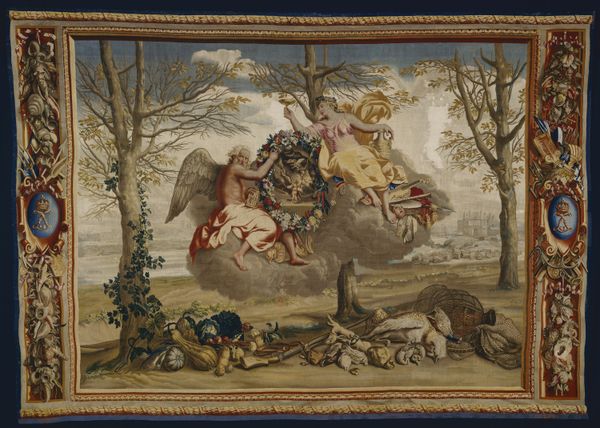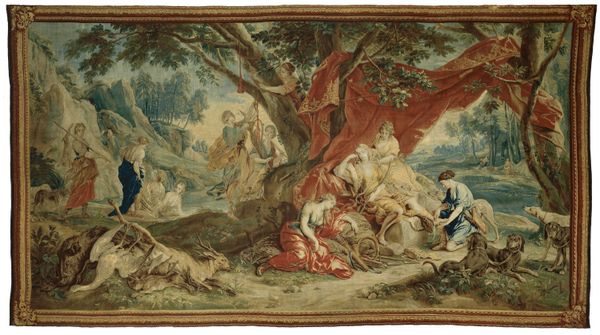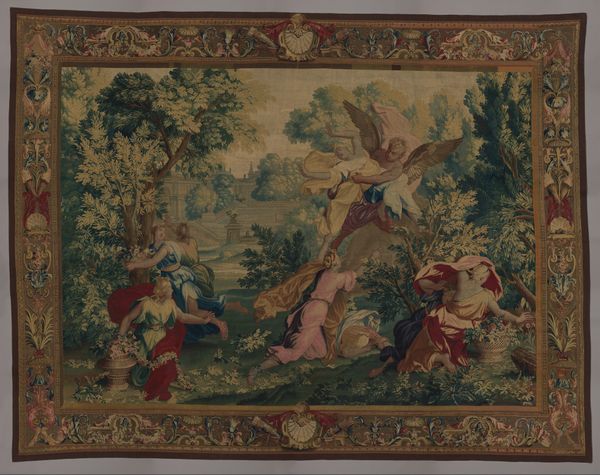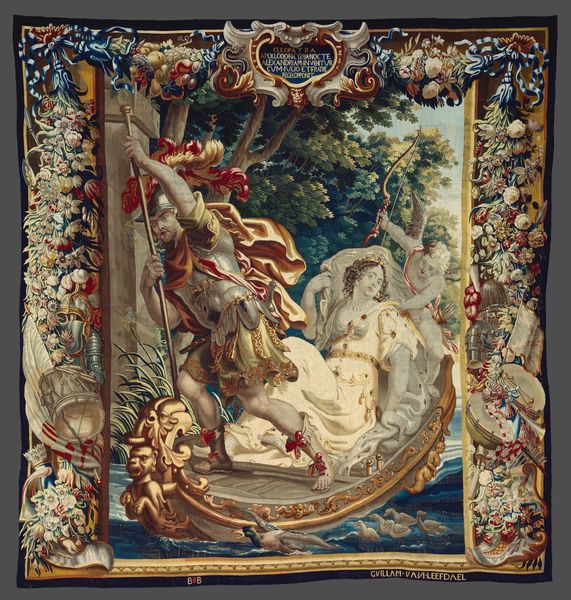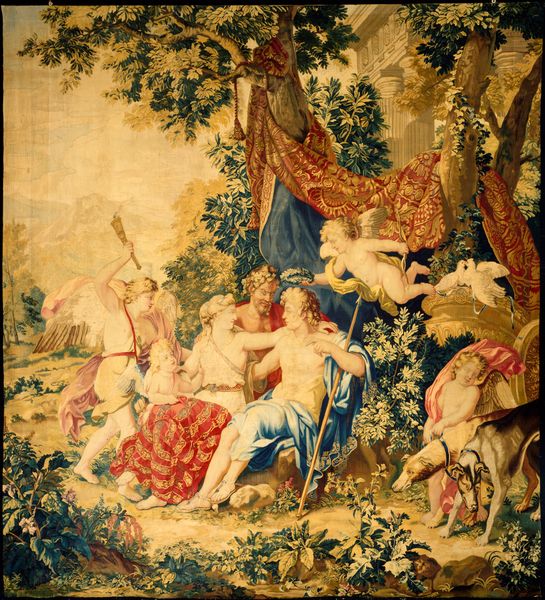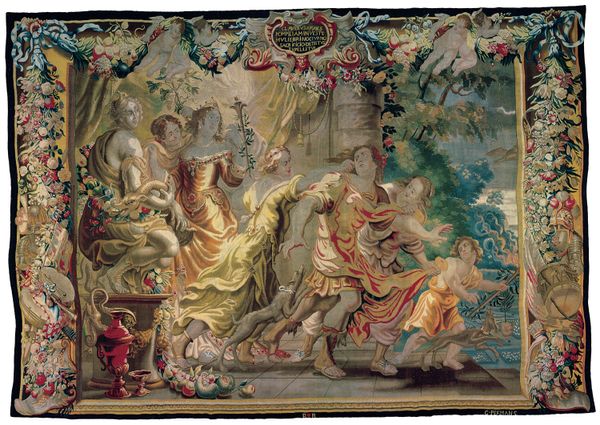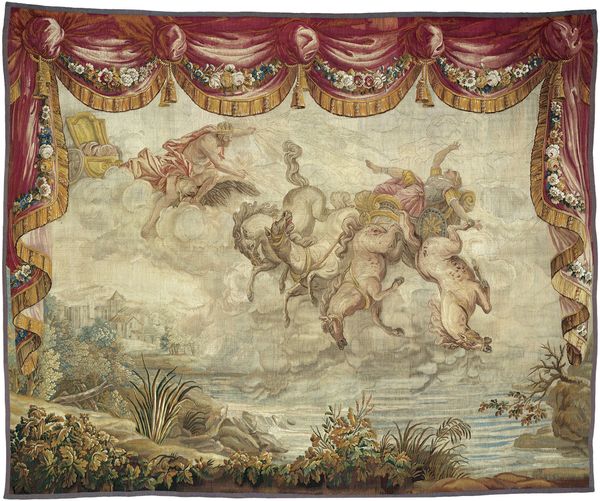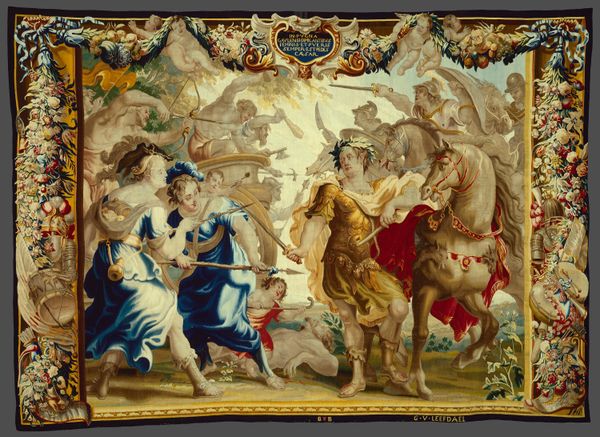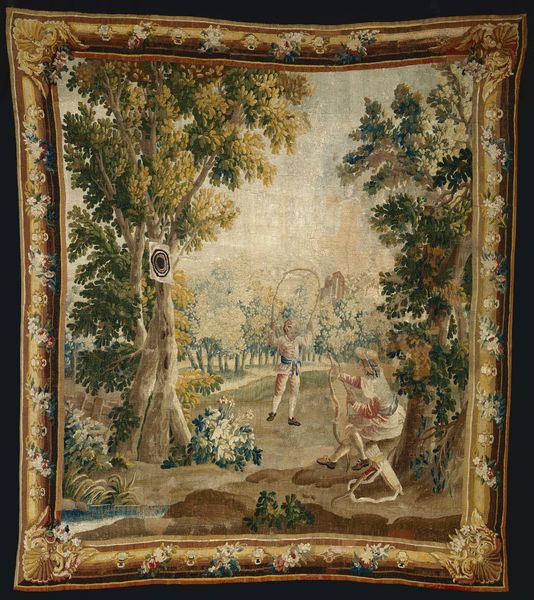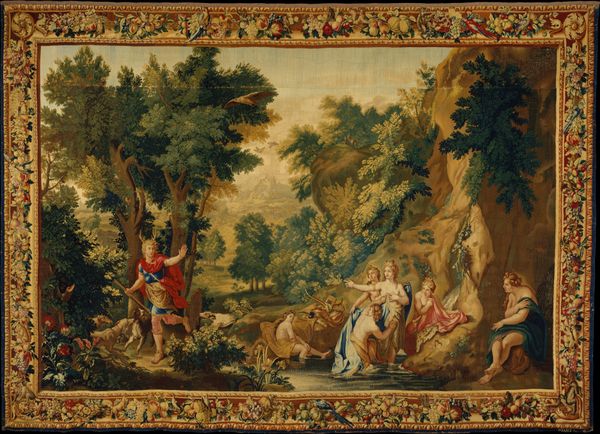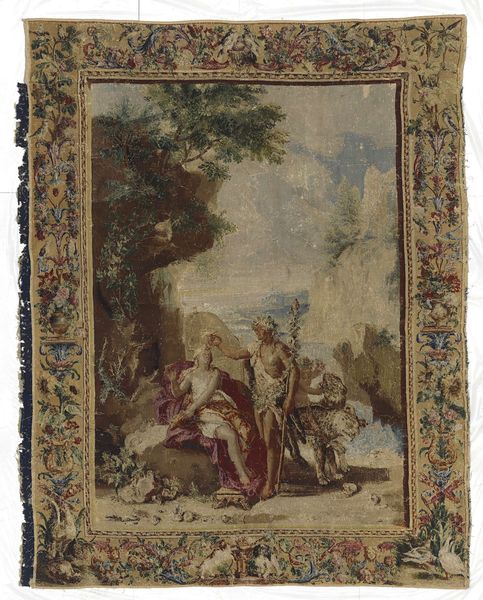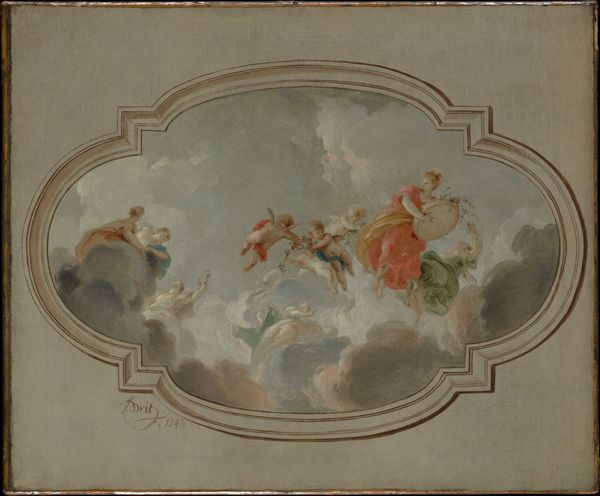
weaving, textile
#
allegory
#
baroque
#
weaving
#
landscape
#
textile
#
figuration
#
oil painting
#
history-painting
Dimensions: 530.3 × 380.8 cm (208 3/4 × 150 in.)
Copyright: Public Domain
Curator: Ah, “Autumn, from The Seasons,” a tapestry conceived around 1700-1720, made under the direction of Charles Le Brun. It’s part of a larger series that exemplifies the Baroque aesthetic in textile form. Editor: My first impression? Opulence. It’s incredibly busy, filled with figures, fruits, and foliage. The composition feels intentionally crowded, a feast for the eyes. Curator: It is certainly designed to impress. The tapestries were very much about underscoring the power of the French court and the cultural sophistication of the era. Consider the gardens depicted in the background; they reflect the ambition and the artificiality of the formal French garden, a very deliberate demonstration of control over nature. Editor: And look at the figures, presumably allegorical representations of Autumn. Their drapery is expertly rendered, the play of light and shadow adding depth despite the limitations inherent in weaving. Curator: The figuration is key. By personifying abstract ideas like the seasons, these tapestries brought classical themes into the domestic sphere, making them relatable to the aristocratic audience. These weren't just decorative pieces, but statements about societal values. The original purpose was to signal wealth and refinement. Editor: The color palette reinforces the feeling of abundance. The golds, reds, and greens create a rich, warm effect. However, the organization feels unbalanced, lacking clear structural distinction—creating a surface rather than a spatial reading. Curator: That perceived imbalance speaks to the social hierarchies of the period, perhaps a deliberate reflection of the asymmetrical power dynamics. It makes one wonder how it might have been perceived in court. Editor: Fascinating. This analysis of its possible context offers new levels of interpretation and meaning, shifting beyond just aesthetic observation. Curator: Indeed. When engaging with historical artworks, we discover they speak to their society. And you provided an expert visual assessment that also helped contextualize this object in our present moment.
Comments
No comments
Be the first to comment and join the conversation on the ultimate creative platform.
